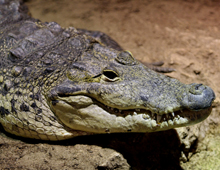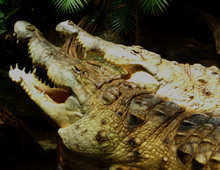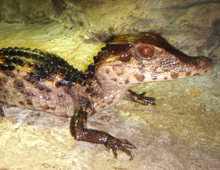
This is the smallest of the four New World Crocodiles, usually reaching about ten feet. Described to science in 1850, it then “disappeared” until the 1920s, when it was determined to inhabit the Yucatan Peninsula and the Mexican Gulf Coast to the north of it. This is one of the first crocodilian species to be bred in US zoos, more than 40 years ago. Its very broad snout gives it an alligator-like appearance, but the tooth protruding from the shut lower jaw clearly identifies it as a crocodile.




